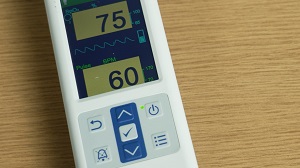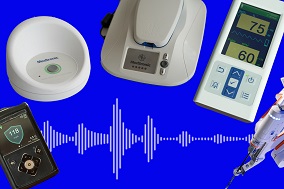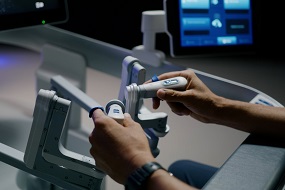Taking on ‘alarm fatigue’ in healthcare technology
A five-part series on how device sounds are engineered with patients and healthcare providers in mind
In the hospital setting, medical technology alarms may be a matter of life and death.
One common source of sounds in hospital rooms is the pulse oximeter, a device attached to a patient’s finger. The technology measures oxygen levels in the blood with corresponding beeps for each heartbeat. If oxygen levels start to drop, the beep tone lowers and drops as well.
“When that tone changes, it’s basically a call to action,” said Michael Luna Victoria, a former respiratory therapist who now works in the Medtronic Patient Monitoring business.

He recalled hearing those alarms in adult ICUs, pediatric care units, and even in the operating room. “All of a sudden, you’d see the entire operating room, which was concentrating on what was going on in the surgery, start to look up because they recognize that change in tone and that there’s something going on with the patient.”
Tackling alarm fatigue
Imagine 30 to 40 devices in an intensive care unit all beeping or making alarms. So many electronic sounds happen all day long in the ICU, that after a while, hospital staff begin to become desensitized to them.
Without intending to, they may even tune out the sounds. This is called alarm fatigue. It can lead to delayed responses or even missed alarms entirely, potentially putting a patient’s life at risk.
For that reason, Medtronic engineers are committed to understanding and minimizing false alarms as well as decreasing clinically inconsequential alerts.
If alarm parameters aren’t set appropriately, alarms may sound too often. In some instances, hospital staff have altered the alert parameters themselves or even disabled alerts altogether which could jeopardize patient safety.
“We want to make sure alarms aren’t sounding continuously for unimportant reasons, only for clinically relevant issues,” said Ulf Borg, Director of Clinical Science in the Medtronic Patient Monitoring business. “We’re working with our research and development teams to design alarms that are not going to be irritating.”
Designing for comfort
Human-factors scientist Steve Nelson wants the sounds of cardiac devices he works on to be more than just effective — he hopes they provide a sense of comfort. He says sounds done properly can provide a sense of assurance that the device is working, and things are going well.
He knows the average patient or clinician hasn’t given much thought to the sound design in healthcare technology, and he’s OK with that. He compares designing sound for medical devices to the background music playing during a movie scene.
“Sounds should help them understand what’s going on with the device, but they shouldn’t become the star of the show,” said Steve. “If the sound is good, it almost shouldn’t be noticed.”
Important Safety Information
Patient monitoring systems should not be used as the sole basis for diagnosis or therapy and are intended only as an adjunct in patient assessment.
L00108162023
Other stories in our Sound Up! Series:




